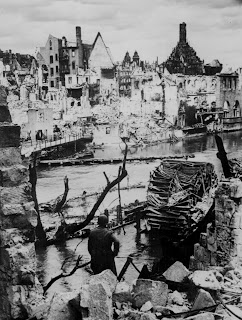
APOSTOLIC PENITENTIARY
DECREE
Special Indulgence for the Year for Priests
As has been announced, the Holy Father Benedict XVI has decided to establish a special Year for Priests on the occasion of the 150th anniversary of the death of St John Mary Vianney, the holy Curé d'Ars, a shining model of a Pastor totally dedicated to the service of the people of God.
During the Year for Priests which will begin on 19 June 2009 and will end on 19 June 2010, the gift of special Indulgences is granted as described in the Decree of the Apostolic Penitentiary, published on 12 May.
Shortly the day will come on which will be commemorated the 150th anniversary of the pious departure to Heaven of St John Mary Vianney, the Curé d'Ars. This Saint was a wonderful model here on earth of a true Pastor at the service of Christ's flock.
Since his example is used to encourage the faithful, and especially priests, to imitate his virtues, the Supreme Pontiff Benedict XVI has established that for this occasion a special Year for Priests will be celebrated, from 19 June 2009 to 19 June 2010, in which all priests may be increasingly strengthened in fidelity to Christ with devout meditation, spiritual exercises and other appropriate actions.
This holy period will begin with the Solemnity of the Sacred Heart of Jesus, a day of priestly sanctification on which the Supreme Pontiff will celebrate Vespers in the presence of the holy relics of St John Mary Vianney, brought to Rome by the Bishop of Belley-Ars, France.
The Most Holy Father will likewise preside at the conclusion of the Year for Priests in St Peter's Square, in the presence of priests from across the world who will renew their fidelity to Christ and the bond of brotherhood.
May priests commit themselves, with prayer and good works, to obtaining from Christ the Eternal High Priest, the grace to shine with Faith, Hope, Charity and the other virtues, and show by their way of life, but also with their external conduct, that they are dedicated without reserve to the spiritual good of the people something that the Church has always had at heart.
The gift of Sacred Indulgences which the Apostolic Penitentiary, with this Decree issued in conformity with the wishes of the August Pontiff, graciously grants during the Year for Priests will be of great help in achieving the desired purpose in the best possible way.
A. Truly repentant priests who, on any day, devoutly recite at least morning Lauds or Vespers before the Blessed Sacrament, exposed for public adoration or replaced in the tabernacle, and who, after the example of St John Mary Vianney, offer themselves with a ready and generous heart for the celebration of the sacraments, especially Confession, are mercifully granted in God the Plenary Indulgence which they may also apply to their deceased brethren in suffrage, if, in conformity with the current norms, they receive sacramental confession and the Eucharistic banquet and pray for the Supreme Pontiff's intentions.
Furthermore the Partial Indulgence is granted to priests who may apply it to their deceased confreres every time that they devoutly recite the prayers duly approved to lead a holy life and to carry out in a holy manner the offices entrusted to them.
B. The Plenary Indulgence is granted to all the faithful who are truly repentant who, in church or in chapel, devoutly attend the divine Sacrifice of Mass and offer prayers to Jesus Christ the Eternal High Priest, for the priests of the Church, and any other good work which they have done on that day, so that he may sanctify them and form them in accordance with His Heart, as long as they have made expiation for their sins through sacramental confession and prayed in accordance with the Supreme Pontiff's intentions: on the days in which the Year for Priests begins and ends, on the day of the 150th anniversary of the pious passing of St John Mary Vianney, on the first Thursday of the month or on any other day established by the local Ordinaries for the benefit of the faithful.
It will be most appropriate, in cathedral and parish churches, for the same priests who are in charge of pastoral care to publicly direct these exercises of devotion, to celebrate Holy Mass and to hear the confession of the faithful.
The Plenary Indulgence will likewise be granted to the elderly, the sick and all those who for any legitimate reason are confined to their homes who, with a mind detached from any sin and with the intention of fulfilling as soon as possible the three usual conditions, at home or wherever their impediment detains them, provided that on the above-mentioned days they recite prayers for the sanctification of priests and confidently offer the illnesses and hardships of their lives to God through Mary Queen of Apostles.
Lastly, the Partial Indulgence is granted to all the faithful every time they devoutly recite five Our Fathers, Hail Marys and Glorias, or another expressly approved prayer, in honour of the Sacred Heart of Jesus, to obtain that priests be preserved in purity and holiness of life.
This Decree is valid for the entire duration of the Year for Priests. Anything to the contrary notwithstanding.
Given in Rome, at the Offices of the Apostolic Penitentiary on 25 April, the Feast of St Mark the Evangelist, in the year of the Incarnation of our Lord 2009.
Cardinal James Francis Stafford
Major Penitentiary
Mac and
Australia Cognita also have a little on this Indulgence













_0625_-_IDP_6_priest.jpg)




















 I was pleased to see these pictures on the
I was pleased to see these pictures on the 















